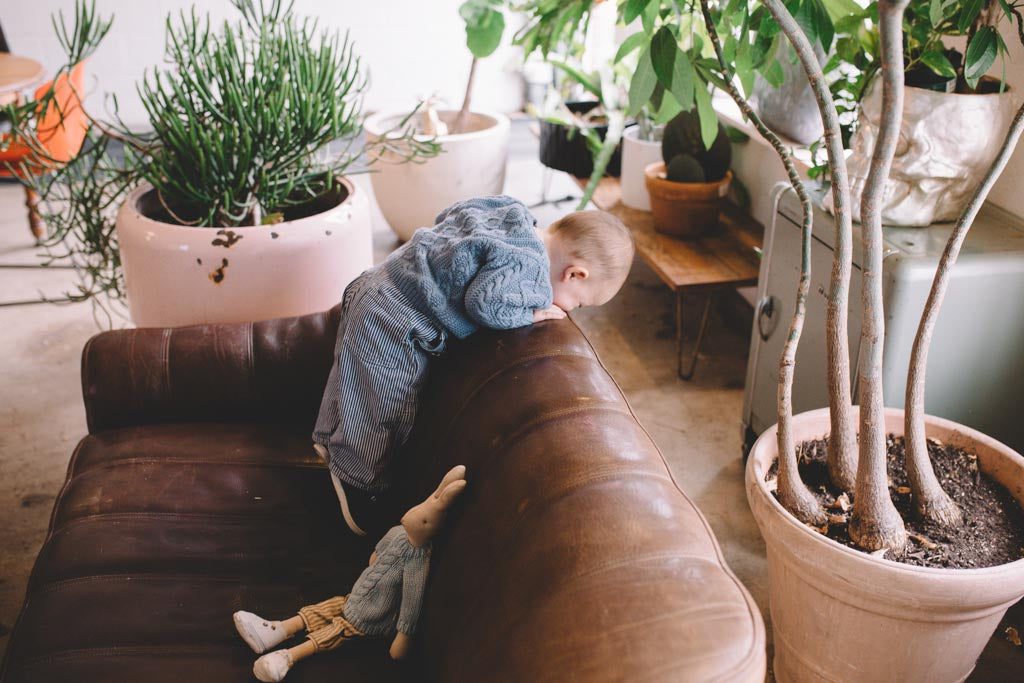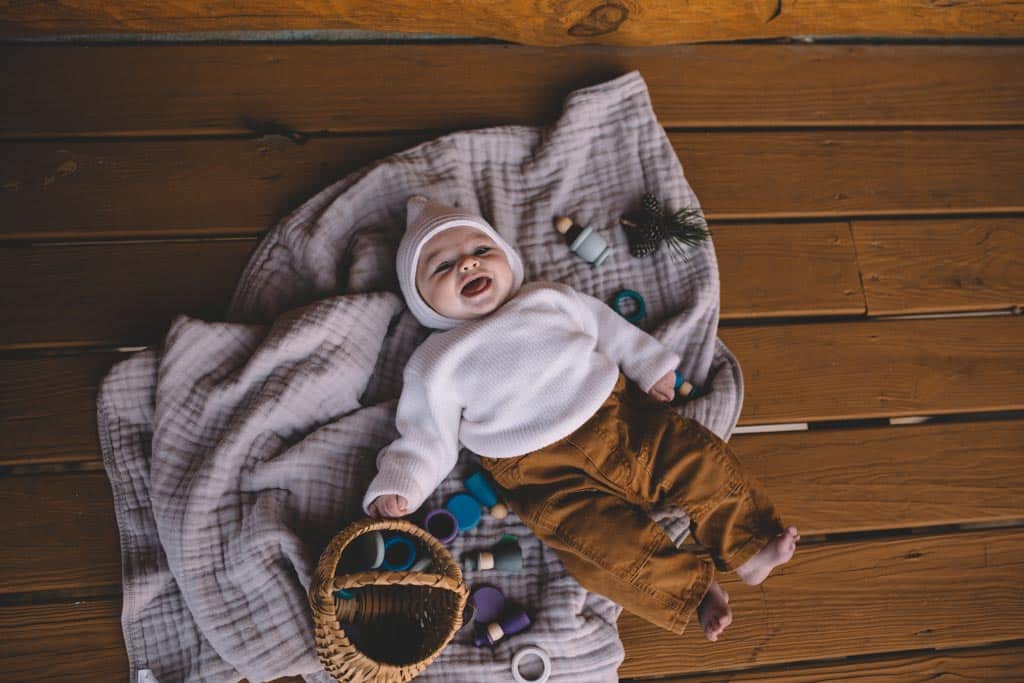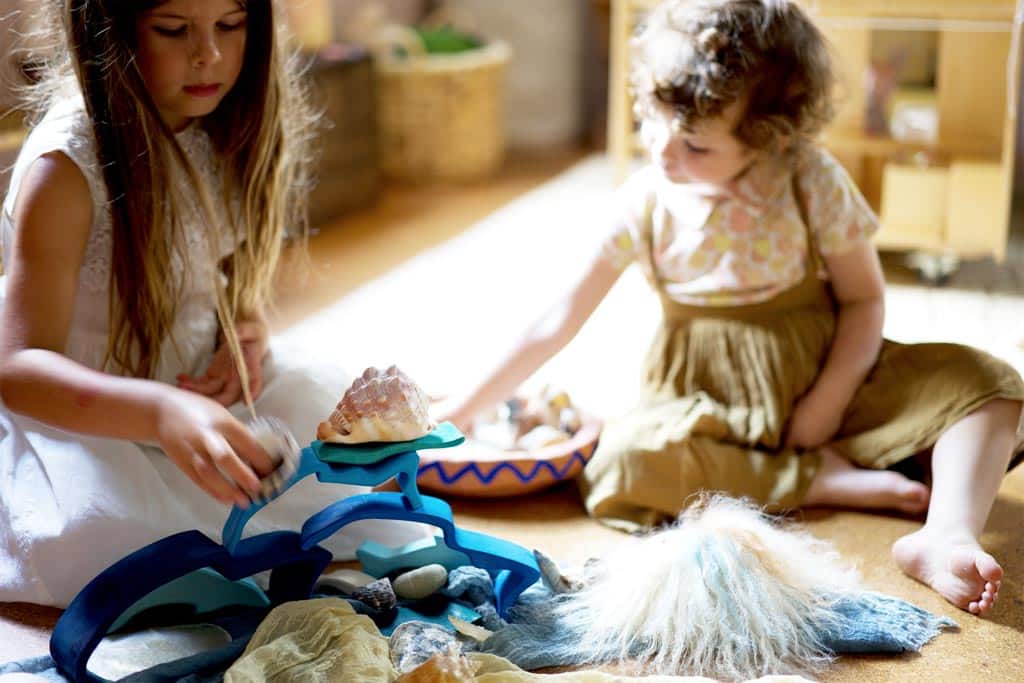Unoccupied play, though seemingly simple, plays a crucial role in your child’s early years. This type of play lays the foundation for various developmental milestones and offers parents a unique insight into their child’s world.
By learning about unoccupied play, you will see your little one’s actions in a new light. You’ll discover how to support her development and find joy in the simple moments of daily routines, which can sometimes feel overwhelming and filled with questions – is my baby developing properly?
The six stages of play
Sociologist and researcher Mildred Parten identified six stages of play, from unoccupied to co-operative. They chart children’s progression from playing alone to playing together. Unoccupied play is the first stage of play and serves as the starting point for all subsequent stages. Read the rest of the series here:
What is unoccupied play?
Unoccupied play is a stage where your child isn’t engaged in play in the commonly understood sense—there’s no active use of toys or participation in structured activities. Instead, she might appear to be simply observing her surroundings or making seemingly random movements.

At what age does unoccupied play occur?
Unoccupied play begins almost right from birth! Although it might be hard to believe that a baby aged 0-3 months has this ability, this is actually when she most intensely practices the first, simple form of play. She then continues it through early childhood, and it serves as the foundation for learning other types of play.
A baby is born with a natural desire to explore and is capable of acting independently in her own way. However, we can easily overlook this because it happens in such a discreet and subtle way.
Examples of unoccupied play
Spotting unoccupied play isn’t tricky if you know what to look for. Some behaviours that signal your child is engaged in this form of play include:
- Observing the world around her without directly interacting.
- Smiling in no particular direction.
- Making spontaneous movements, like waving her arms or kicking her legs, without a clear goal or purpose.
- Splashing water with her hands and feet during the evening bath.
- Seeming to be “in her own world” and not focused on any particular toy, activity, or person.

Why is unoccupied play important?
Unoccupied play, while it may seem like your child is doing “nothing”, is fundamental to her early cognitive and sensory development.
- Discovering her world. During unoccupied play, your child is taking in an immense amount of information about her environment. It’s her way of beginning to understand the world around her. By simply observing, she’s learning about light, sound, movement, and textures.
- Discovering her body. Simple play helps your child understand her own body. It allows her to identify her legs, fingers, hands, head, and the relationships between different body parts.
- Physical development. The spontaneous movements your child makes, such as waving or kicking, help her develop motor skills and muscle strength.
- Building independence. Being comfortable in her own company and not constantly relying on toys, activities, or others is the first step towards developing independence. Your child learns to be content and engaged, even when she’s alone.
- Building confidence. A child with the space to freely interact with her surroundings gradually learns about her individuality and begins to develop autonomy. She gains confidence in her abilities and a desire to test them.
- A relaxed parent. When you trust your little one’s natural ability to learn through unoccupied play and understand that you don’t need to be a constant entertainer, you will gain more peace and time for yourself, without feeling guilty. In a safe and supportive environment, your child will acquire new skills and reach developmental milestones at her own pace.
Encouraging unoccupied play
While unoccupied play is inherently spontaneous, there are ways to foster an environment that promotes it. Your attitude also matters – being attentive, patient and believing in your little one’s abilities will be a great help! Here are a few aspects you can focus on to create the optimal conditions for unoccupied play.
- Inform your child about your plans. Unoccupied play can take place both in your presence and without you. However, if you plan to set your child down in another area and step out of sight for a moment, communicate this calmly. Babies are little people, and like us, they feel safer and more confident when they know what’s happening. Establishing a ritual for independent play and talking about the time set aside for it are good habits that will support independent play in later years.
- Provide safe spaces. Ensure your child has a safe area where she can move freely, be it a play mat or a secure room.
- Limit distractions. Turn off the television, and avoid engaging her constantly. Allow her the opportunity to become curious about her surroundings.
- Provide variety: Give your child free time lying on her back, but also encourage tummy time. Laying your child on her stomach, even for just a few minutes each day, offers her a new perspective and opportunities for exploration. Allow your child to explore independently on the floor, a blanket on the grass, or in water.
- Resist over-scheduling. Not every moment of your baby’s day needs to be filled with structured activities. Let her have “downtime” where she can just be.
- Be patient. If your child seems content simply observing or making random movements, let her be. This is her way of engaging with the world in these early stages.
Final word
Unoccupied play is a foundational stage in your child’s play development. It’s a crucial period where she’s learning about her world, building independence, and developing physically.
Remember, your child is dependent, but not powerless. Even the youngest child can construct knowledge and be an independent explorer. Sometimes, it’s simply a matter of not getting in the way. By understanding and encouraging unoccupied play, you’re setting the stage for a rich developmental journey.





